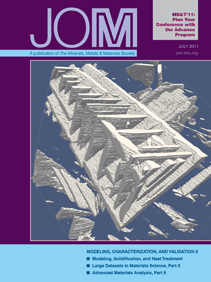 |
TMS ONLINE | TMS PUBLICATIONS | SITE MAP JOM Material Matters Articles in Full-Text Format: November 2004 |
Exploring traditional, innovative, and revolutionary issues in the minerals, metals, and materials fields. |
|||||
| OUR LATEST ISSUE | |||||
VISIT THE JOM COVER GALLERY
|
Forfeiture of Legal Rights Through Delay in AssertionArnold B. SilvermanMany lay people are aware of a legal right having been lost as a result of the possessor of that right “sleeping on his or her rights.” This concept is a reflection of several specific types of delay, which as a matter of legal policy and fairness, result in the inability to assert a right which might have been valid if asserted in a more timely fashion. One category of delay that can result in loss of rights involves the failure to initiate legal action within the statute of limitations. A statutory limitation on rights may be a result of a federal statute such as the patent act, which prohibits one from seeking damages for patent infringement that occurred more than six years before the action. Numerous state statutes provide for limitations on actions, such as a two year statutory limitation for bringing action for negligence that produces injury or a four-year statute of limitation for a breach of contract, for example. Among the reasons for having statutes of limitations or other limitations falling under the legal concepts of “laches” or “estoppel” is the fact that delay may make it more difficult for one having the claim made against him or her to prove a defense. For example, documents might be destroyed; witnesses may die, become incapacitated, or be otherwise unavailable; and human memory has its limitations. In balancing interests between the one who possesses the claim and those who must defend, a reasonable time period for assertion has been deemed important. While the court cases do suggest an overlap between the concepts of laches and estoppel, in general, laches Forfeiture of Legal Rights Through Delay in Assertion Arnold B. Silverman focuses more on delay in assertion of a claim, such that one might conclude it would be inequitable to grant the relief sought. Another way of analyzing this is to conclude that the delay was sufficiently long as to lead to the conclusion that the party had waived its right. The extent to which there is provable injury, prejudice, or disadvantage to the party against whom the claim might be asserted is also taken into consideration. Estoppel has generally been asserted in situations where action or inaction by the one having the claim has caused another in reasonable reliance to change their position to their detriment. In many situations, a far shorter period of time is involved in finding estoppel than in concluding that laches exists. For example, suppose a patent owner writes a letter bringing a patent to the attention of a third party and suggesting that they review the same to evaluate whether the third party’s conduct might infringe the patent. If there is no follow-through on the part of the patentee, at a certain point in time, the patentee will be precluded from asserting the claim on the basis of estoppel. A thorough consideration of all of the facts with a view toward achieving equitable balance would be required in evaluating that issue. Assuming the same situation, but a slightly modified version of the patentee’s letter, suppose the patentee states that if the recipient does not within two weeks of the date of the letter provide written assurance that the recipient will terminate manufacturing a given product, litigation will be initiated against the recipient without further notice. If the recipient continues to take orders and manufacture product for a period of months, at some point it would be reasonable to conclude that the patentee has determined that it will not initiate litigation. If in reasonable reliance, the recipient enhances its expenditures for marketing the product, increases sales, or makes a capital investment to enlarge its manufacturing capability, all of these could be considered a change of position to the detriment of the recipient upon reasonable reliance that litigation will not be initiated. It should be noted that the statute of limitations typically provides a rigid, specific time period after which action cannot be brought, while laches and estoppel are equitable in nature and require that a judgment be made based upon an evaluation of all of the facts involved in the specific case. As will be apparent from the forgoing, when one has a potential claim against another, there must be an evaluation not only as to the merits of the claim, but also attention should be directed toward the timely assertion of the claim if the one having the claim does not wish to risk loss of the right to assert the same. Arnold B. Silverman is chair of the Intellectual Property department and a member of Eckert Seamans Cherin & Mellott, LLC in Pittsburgh, Pennsylvania. |
Copyright © 2004 by The Minerals, Metals & Materials Society.
Direct questions about this or any other JOM page to jom@tms.org.
Search TMS Document Center Material Matters Contents JOM TMS OnLine
